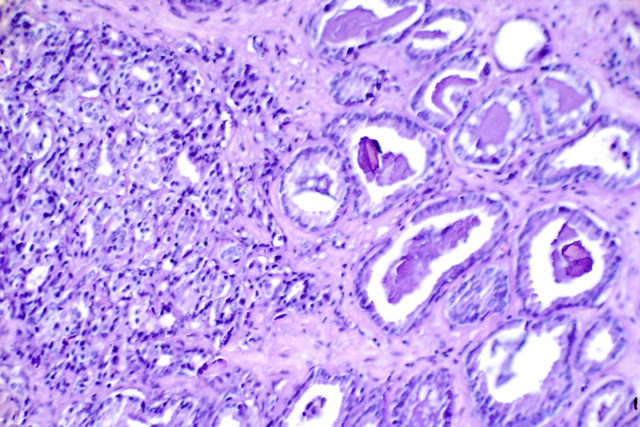
An experimental Novartis cancer therapy acquired as part of a $2.1 billion deal now has data from a pivotal study showing that it can help patients, diagnosed with some of the toughest cases of prostate cancer, live longer.
According to Phase 3 study results released Thursday, treatment with the Novartis therapy 177LU-PSMA-617, in addition to the standard of care, showed a statistically significant improvement in overall survival compared to the standard of care alone. Furthermore, the reduction in the risk of death was an estimated 38% in the 177LU-PSMA-617 arm compared to those given the standard of care. Novartis is scheduled to present the study results on June 6 during the annual meeting of the American Society of Clinical Oncology.
177LU-PSMA-617 is a type of targeted radiation therapy intended for treating advanced cases of prostate cancer. This therapy consists of a radioactive particle that is attached to a ligand that binds to receptors on the surface of cancer cells. Novartis added 177LU-PSMA-617 to its pipeline via the 2018 acquisition of Endocyte.
Infused into the blood, the Novartis radioligand is designed to bind to prostate cancer cells that express PSMA, a protein found on castration-resistant prostate cancer cells. This targeted approach is meant to spare healthy tissue from the effects of radiation. The effect of the radiation is also limited to a small area, which in turn limits the damage to surrounding cells.
“Patients suffering from metastatic CRPC (castration-resistant prostate cancer) who have progressed through contemporary hormonal treatments and chemotherapy have few meaningful therapeutic options,” Michael Morris, a medical oncologist at Memorial Sloan Kettering Cancer Center and chair of the study’s scientific committee, said in a prepared statement. “The study demonstrated that 177Lu-PSMA-617 improves disease progression and prolongs survival, which are key measures of clinical benefit in the mCRPC population.”
Median overall survival for patients treated with the Novartis radioligand was 15.3 months compared to 11.3 months those that received the best standard of care, the company reported. In progression free survival, which is a measure of how long a patient lives without the cancer worsening, the median time in the radioligand arm was 8.7 months compared to 3.4 months in those treated with the standard of care.
Grade 3 or adverse events related to the treatment occurred in 28.4% of patients who received the Novartis therapy compared to 3.9% of those in the standard of care arm. The most common of these events included anemia, low blood platelets, low levels of lymphocytes, fatigue, urinary tract infection, and low levels of a type of white blood cell called neutrophils. In the group given the Novartis therapy plus the standard of care, 11.9% of participants discontinued treatment due to adverse events. In the standard of care arm, 8.5% of participants discontinued treatment.
Novartis plans two more studies of its radioligand therapy as an earlier line of treatment for prostate cancer patients. One study will assess the therapy’s potential use in metastatic castration-resistant prostate cancer before treatment with taxanes, a class of chemotherapy. Another study will test the radioligand in patients whose prostate cancer has spread but can still be treated with hormone therapy.
Novartis is not stopping at prostate cancer. The company said it is also exploring applications of radioligand therapy to other types of tumors.
Public domain image by the National Cancer Institute








